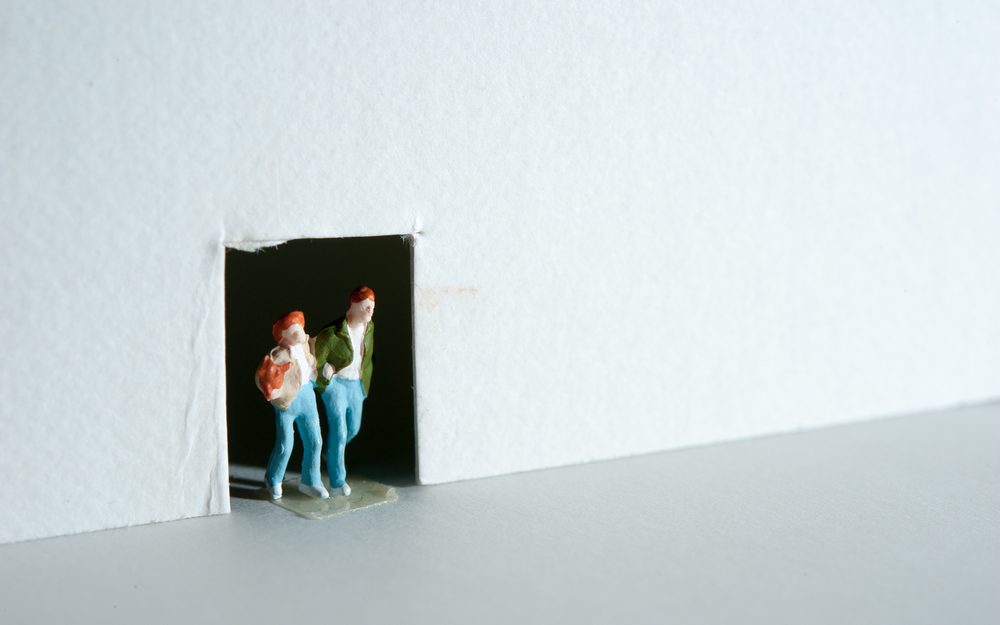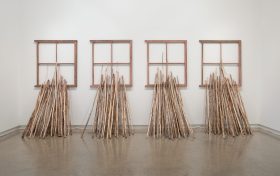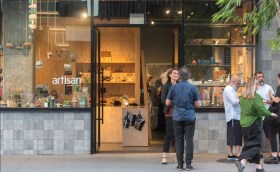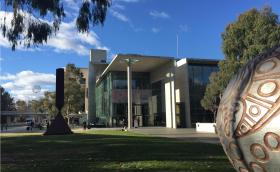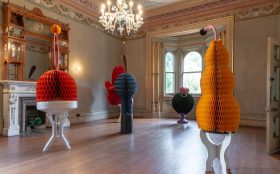What does a better art institution look like in this day and age? Timely as ever, this is the topic of exploration in the Institute of Modern Art’s (IMA) latest online lecture series, Net Positive, featuring thinkers from diverse backgrounds and professional knowledge.
Recent sessions explored what alternative visions and actions could drive real institutional change, from HR practices to hitting the pause button on programming.
While many concepts mentioned are neither new or revolutionary, they point to the very stubbornness of structures that need to be overturned in order to achieve true diversity, inclusion and care. These speakers offer sharp observations and advice that can help kick off the momentum.
A step beyond de-colonising
In Australia, many have come to recognise the colonial legacy of museums and galleries – their modes of operation, collecting methods and presentation continue to reflect those tendencies which are embedded in its structure.
But there are dangers of simply critiquing an institution without consideration of how real change can actually be enforced.
Wardandi (Nyoongar) and Badimaya (Yamatji) Aborigianl curator and Head of Indigenous Programs at Art Gallery of WA, Clothilde Bullen, opened her presentation with the provocation: ‘Who doesn’t want to critique institutions? They’re an easy target, and we forget that there are humans inside of them who, for good or for bad and usually something in between, are often just doing what they can with the tools they have available in a space that, by its very definition, makes it challenging to be non-conforming.’
Bullen highlighted that ‘subverting and ultimately controlling a system has to commence from a point of origin within that system,’ which means calling to arms Indigenous arts workers to resist homogenisation and play a role in educating fellow staff and the public. These are empowering acts, but they too, come with downfalls.
‘[The question is] have we succeeded in building a generation of young arts professionals who are ready and willing to step up, not just for themselves but for their communities too? The answer that I’d still say is not entirely,’ Bullen continued.
‘Perhaps the weight of expectation and responsibility placed upon these young leaders is too great, resulting in few people who elect to enter the business. So we have a very disproportionate amount of people who are wanting to be artists, versus those who actually want to facilitate the creativity, like myself.’
It’s a harsh reality, so how do we step away from individual heroism, and instead turn to advocate for institutional change as a collective?
The responsibility for succession planning cannot be laid solely at the feet of Indigenous arts professions. Institutions themselves need to understand the importance of succession planning, and how it may benefit them also.
Clothilde Bullen
Succession planning is a major aspect, and Bullen argues that institutions need to see the value of Indigenous practices in this field.
Another is a deep analysis on funding practices, especially as hard data shows that money (nearly half a billion dollars) generated from the Indigenous arts industry are mostly run by, and benefiting non-Indigenous people.
‘In my opinion, Indigenous money shouldn’t be used to fund Indigenous curatorial and arts workers positions, including internships, and those sequestered for succession planning. It should be an intrinsic component within the overall staffing resource allocation embedded within the cultural values of the institution.’
It’s about embedding Indigenous systems of knowledge into the institution itself, rather than treating it as a counterpart, or parallel, to ‘standard’ operations.
The key is to go that one step beyond ‘de-colonising’, Bullen concluded. ‘I’m not sure if I have an alternative version of an institution. That seems to me like it would be de-colonising as opposed to indigenising. I don’t want to work from a white centre and change other things to fit in, which is essentially what de-colonising is as a concept.’
Opting for fluidity
We could also look to initiatives abroad for inspirations around how institutions can change for the better. Alia Swastika, Director of Jogja Biennale Foundation in Indonesia advocated for the biennale model as an institution of open possibilities.
‘The notion of art institutions is becoming more fluid rather than being strictly defined… [with] some improvisations or different ideas from the local situation itself,’ said Swastika.
Operating under a combined model of a biennale and a foundation since 2010 (the biennale itself opened its first exhibition in 1988), Swastika outlined the advantages of remaining independent while being able to offer diverse programming and collaborations, such as working with publications, schools and communities.
‘The biennale is one of the strongest art institutions; it’s an example of how government-funded institutions can be independent in terms of ideological positions, in terms of the choice of artistic practices, and also in terms of how we try to underline the production of knowledge as our core vision of the institution,’ Swastika added.
The focus is to centre biennales as a hub for people rather than uphold elitism. New potentials can arise from connecting different biennales across the region, by reformulating their position through community engagement and inviting different participants to helm their own program under a broad umbrella.
In Swastika’s words, there is ‘the potential for the biennale foundation to not only act as a hub, but become more like a movement’.
Resourcing away from neutrality
Laura Raicovich served as President and Executive Director of New York’s Queens Museum – one of the city’s most culturally diverse boroughs – during a turbulent period of the Trump administration. Last year, Raicovich released her book, Culture Strike: Art and Museums in an Age of Protest, and shared the lessons and learnings that came out of it.
I see protests as a form of radical care for cultural spaces; if people didn’t care about what the cultural sphere did, they wouldn’t bother to protest. So listen deeply to what that protest is telling you or your institution.
Laura Raicovich.
Echoing Bullen, Raicovich reflected: ‘While art has enormous potential to shift society, the institutions upon which it relies help hold systems of power in place … Amid calls for diversity, equity and inclusion within our cultural spaces, there is no way around a confrontation with “neutrality” as a persistent ideology within the museum.’
‘It means that if we believe in the power of art, we also ought to believe in the power of cultural institutions, which in turn, hold a responsibility in utilising that power,’ she continued.
Recently we have seen arts and cultural institutions stepping out of the confines of so-called neutrality to protest, protect and aid Ukrainian citizens during Russia’s invasion. One example is Warsaw’s Museum of Modern Art which transformed into a refugee centre offering basic necessities and holding creative healing workshops.
‘But even without such conflict spurring people into action, there are various aspects for cultural institutions to start making change,’ said Raicovich.
First and foremost, ‘cultural spaces need to conclude the breakneck speed at which they’re working … Slowing down creates a window in which we can ensure that as many appropriate stakes are at the table as possible [and] cultural workers can’t do that on top of what they’re already doing, it requires a reimagination of how the workflow goes.’
The area of Human Resources is where change can be implemented the quickest with outstanding long-term impacts.
Raicovich suggested easy fixes ranging from printing the salary on every single job description, to reevaluating the connection (or lack thereof) between front of house and back of house operations.
‘It’s about considering every stakeholder that is actually involved, not just those holding power or money. If you don’t look deeply at how you’re doing the work and who’s in the room when you’re making decisions, you’re never going to change what happens and what the outcomes are,’ Raicovich added.
Capturing relationship through contracts
Another huge aspect of the human resourcing procedure is reflected through contracts and the ways in which they reinforce power dynamics between the institution, its employees, as well as external contractors such as artists, facilitators, and presenters.
During a discussion in real time between the Canadian based non-profit BIPOC collective Gendai, and the IMA, both sides reflected and questioned the terms that were offered in their contracts.
Petrina Ng and Marsha Maharani from Gendai pointed out that the standard contract in cultural institutions favours and protects the institution while embodying complicated language, a blanket approach and a lack of transparency.
They said: ‘Institutions are secretive and do not share their internal documents with the larger sector. The predicament of that is no one knows what best practices should look like.’
New standards would entail paid time to review and negotiate contracts, understanding individual needs, an approach that prioritises the needs of the party with the lesser power and institutional labour (representatives) to support the understanding of the contract and create a transparent negotiation process.
Ng added: ‘Even if this sounds like more work, we want to emphasis that this would actually be a more efficient negotiation process. When a good contract does the job, this in turn creates more sustainable labour practices and benefits both the institution and those who have contracts.’
I want to move away from the thinking that our sector is under-resourced because I think it’s not – it’s just kind of inefficiently distributed.
Petrina Ng, Gendai
Having gone through negotiations with Gendai, IMA Director Elizabeth Nowell and Assistant Director Tulleah Pearce first identified that contracts are often not given much thought, even in leadership roles.
Perhaps beyond it being a bureaucratic necessity, ‘we need more clarity on how to capture the relational interaction between parties,’ Nowell suggested.
She continued: ‘Going back to that idea of slowing down [mentioned by Raicovich], we need to find the space to rethink the way we do things and break free of these very entrenched ways of operating.’
For Pearce, it means thinking about ‘how do we embed those qualitative aspects of a relationship into an agreement? Contracts are very capitalist documents in a way, maybe it requires transforming it into something different?’
Perhaps this can begin with Maharani‘s suggestions to treat ‘contracts as living documents that gets amended every time you work with someone – it’s not [just based on] templates, it’s a living process’.
Gendai is initiating an open call to all institutions to share their current contract templates to culminate in a Wiki database.
The take-home lesson: if we are going to educate the public on the value of socially and politically engaged, often confrontational, art, then we as cultural workers better get accustomed to confronting the ways in which our institutions operate too.
Upcoming presentations of Net Positive: What does a better art institution look like? include guest speakers Sins Invalid, The White Pube, Decolonial Hacker and Julie’s Bicycle, held online by the IMA. Register your interest; free.

